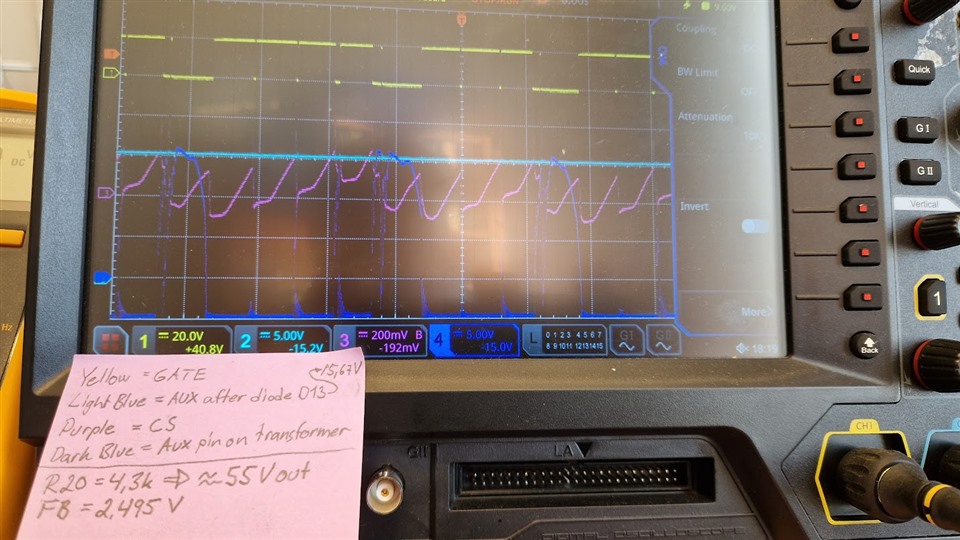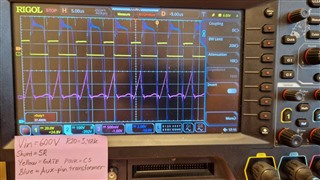Hello TI,
We have a custom transformer made and have designed a PCB based on your EVM.
We have set a 55V output but once we load with 47ohms, it goes down to around 45V and at 100ohm load the Vout goes down to 36V. Why is that?
Aux seems to stay the same.





